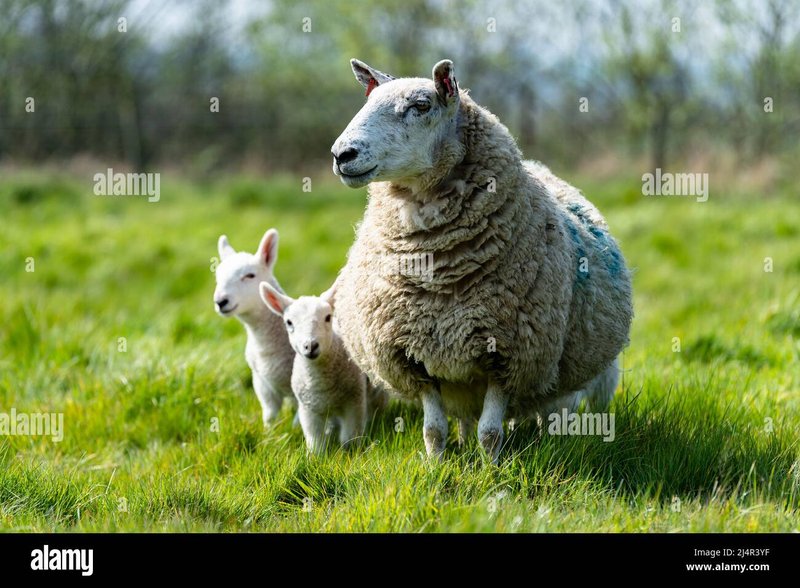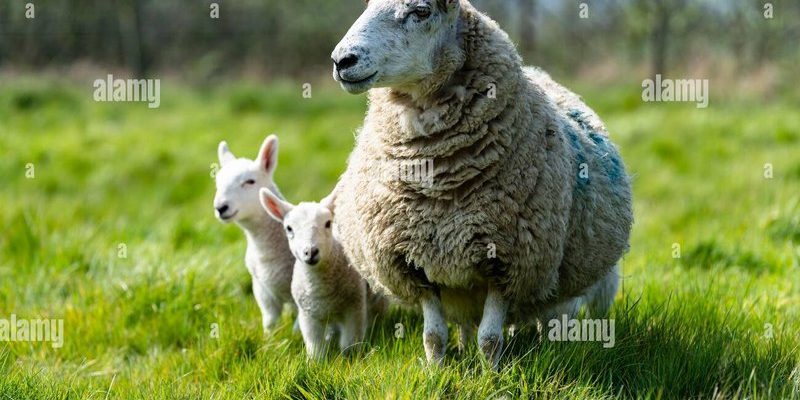
Just like any first-time parent, ewes need some guidance and support. They rely on you to create a safe environment, monitor their health, and provide the right nutrition. In this guide, we’ll dive into the essential aspects of lambing season, from preparing for the births to caring for those sprightly little lambs once they arrive. So, grab your favorite cup of coffee, and let’s talk about how to navigate this delightful yet demanding season.
Preparing for Lambing Season
Before lambing season begins, there are several steps to take to ensure a smooth experience. Think of it like getting ready for a big family gathering—there’s a lot to consider! First off, you’ll want to create a safe space for your ewes. A clean, dry area is key. Make sure the lambing pens are set up with fresh bedding to keep the environment comfortable.
Next, consider the nutritional needs of your ewes. They need a balanced diet that includes hay, grains, and minerals, especially as they near their due dates. Proper nutrition can significantly impact the health of the lambs. It’s essential to provide them with enough protein and energy. After all, a well-fed ewe is more likely to have a smooth delivery and healthy lambs.
Monitoring your ewes closely is crucial in the weeks leading up to lambing. Get to know their individual patterns and behaviors. When a ewe is close to giving birth, she’ll show signs such as restlessness or seeking solitude. Keeping an eye on these signs will help you be there when they need you the most.
Caring for Ewes During Labor
When the big day arrives, it’s time for you to step in and offer support. Ewes typically deliver without much assistance, but that doesn’t mean you shouldn’t be prepared. Here’s the thing: you should be ready to pitch in if complications arise.
As labor begins, it’s essential to have a calm presence. Ensure the environment is quiet and peaceful, as stress can affect the ewe during delivery. You might want to have a few essential supplies on hand, such as clean towels and iodine for disinfecting the lamb’s naval cord.
During labor, observe the ewe closely. If she seems to struggle or if the lamb doesn’t come out after a reasonable amount of time, don’t hesitate to intervene. Use your judgment—if something doesn’t feel right, it’s better to consult a veterinarian for assistance.
Welcoming the Newborn Lambs
Once the lambs are born, the fun really begins! You’ll want to ensure that each one stands up and starts nursing within the first few hours of life. This is where colostrum, the first milk, comes in. It’s packed with antibodies that help protect the lamb from diseases.
If you notice a lamb struggling to nurse, you may need to assist it by gently guiding it to its mother. Sometimes, the lamb might need a little encouragement. A weak or unresponsive lamb might need a dose of colostrum from a bottle if the mother is unable to care for it right away.
Don’t forget to keep an eye on the bonding process between the ewe and her lambs. This relationship is vital. Ensure they have some quiet, uninterrupted time together so they can form that important connection.
Post-Birth Care for Ewes
After delivering, ewes need care and attention, too. You might be thinking, “What’s next now that the lambs are here?” Well, the ewe will need time to recover and should have access to food and fresh water. A gentle approach goes a long way—make sure she feels at ease in her environment.
For the first few days, monitor the ewe’s condition closely. Look for any signs of distress or health issues, which can sometimes occur after labor. Keeping a close eye on her will help ensure she can provide the best care for her lambs.
You might also consider providing a vitamin and mineral supplement to aid her recovery. Ewes expend a lot of energy during lambing, and replenishing their nutrients helps them thrive and take care of their young.
Caring for Newborn Lambs
Newborn lambs are full of energy, and they’re incredibly curious! As a shepherd, it’s your task to ensure they grow strong and healthy. Start by ensuring that each lamb receives adequate nutrition through nursing. Again, colostrum is vital in the first hours, so be vigilant.
As they grow, lambs will need proper shelter to protect them from harsh weather. A clean, dry environment is essential to prevent health issues like hypothermia or pneumonia. If the weather is particularly cold, consider using heat lamps or bedding to keep them warm.
Socialization is also crucial for lambs. Allow them to interact with their mother and other lambs, as this fosters their development and happiness. Plus, watching them frolic around is a joy!
Common Challenges During Lambing Season
Lambing season isn’t without challenges. It’s essential to be prepared for potential issues that may arise. For instance, some ewes may reject their lambs, which can be distressing for everyone involved. If this happens, you might need to step in and bottle-feed the lamb until it can reunite with another ewe or stay with its mother.
Other complications can include birthing difficulties, where a ewe has trouble delivering. You’ll want to recognize the signs of dystocia (difficult birth) early on. If the ewe is in distress or a lamb is stuck, it’s best to call a veterinarian for assistance.
Another challenge is ensuring all lambs are healthy. Keeping an eye out for signs of illness or weakness will make a big difference. If you notice anything odd—like lethargy or not gaining weight—seek help quickly.
Wrapping Up the Lambing Season
As lambing season winds down, it’s rewarding to see the results of your hard work. Those fluffy little lambs will grow and become a vital part of your flock, bringing joy and productivity. You might have learned quite a bit along the way and perhaps even built a deeper bond with your ewes and their new lambs.
Reflecting on your experiences this season can help improve your approach for next year. What went well? What could you adjust? Each lambing season is a learning experience, and your insights can make the next one even better.
So, as you tuck in for a well-deserved rest after a busy season, remember: caring for ewes and newborn lambs is more than just a chore; it’s a beautiful cycle of life on the farm. Embrace the journey, and enjoy the fluffy moments that come with it!

